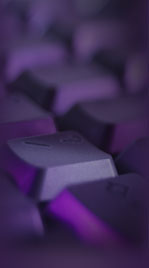|
|
|
|
|
|
|
|
PLASTIC CARDS |
FAQAt KL Services, we've done our best to create a Web site that anticipates and satisfies our customers' needs. With that goal in mind, we've compiled a list of frequently asked questions. If you do not find an answer to your question here, contact us at 0845 838 0631 or info@klservices.biz. |
|
Embossing is probably the most familiar of plastic card processes, it consists of impressing print into the card producing raised characters. Tipping usually follows embossing, where the raised characters are surfaced with a hard wearing contrasting colour finish. Tipping colours are usually silver, gold, black and white. |
||||
|
Magnetic Stripe Many cards have a magnetic stripe on the reverse side, the stripe can be Low Coercivity or High Coercivity. |
||||
|
Thermal imaging is a computer generated hot colour transfer process and has become the fastest growing solution for reproducing special graphics, such as logo's, images, photo's and bar codes. That, and the ability to use True Type fonts provide for that custom look or ID cards. Thermal printing is also computer generated, and similar to thermal imaging. It can be used with True Type fonts and bar coding to personalise the card. Hot stamping uses heated metal dies to stamp special coloured resin foil on to the cards. Because the colour is welded into the depression produced by the hot metal die, the print is almost impossible to remove or alter. Suitable for ascending numeric data only. |
||||
|
Inkjet printing is used for high speed printing onto plastic. The (black) ink uses a solvent which etches the plastic. Data acquisition is part of card processing. we offer services to download and capture data from users systems via on-line direct modem connections or via the Internet (be aware of security implications if using the Internet). Data conversion takes place if required after data capture or submission. Our software experts can provide filters which extract the required card data from other data. Security and Quality Control All customer data is kept under strict security, and after processing, all data is destroyed, except that retained for customer Quality Assurance and audit purposes. Scratch Off Overlay We can apply to selected areas of cards a special opaque 'Scratch Off' label. Useful for maintaining secure card details and protecting data from those in the card distribution system who may not be authorised to see the card details.
|
||||
|
[Home] [Services] [FAQ] [About] [Contact Us] [Legal] |
